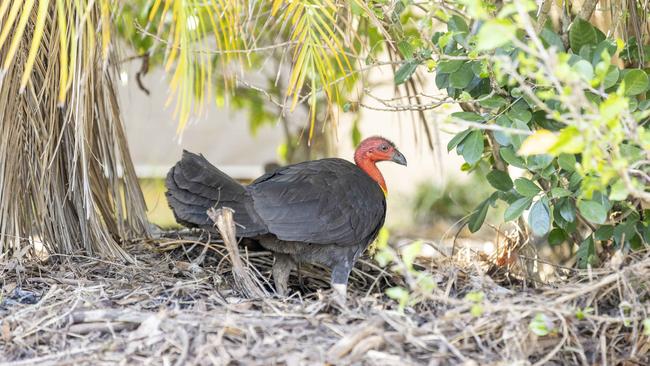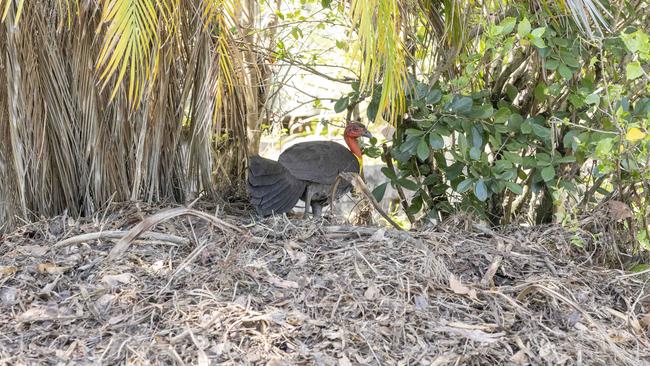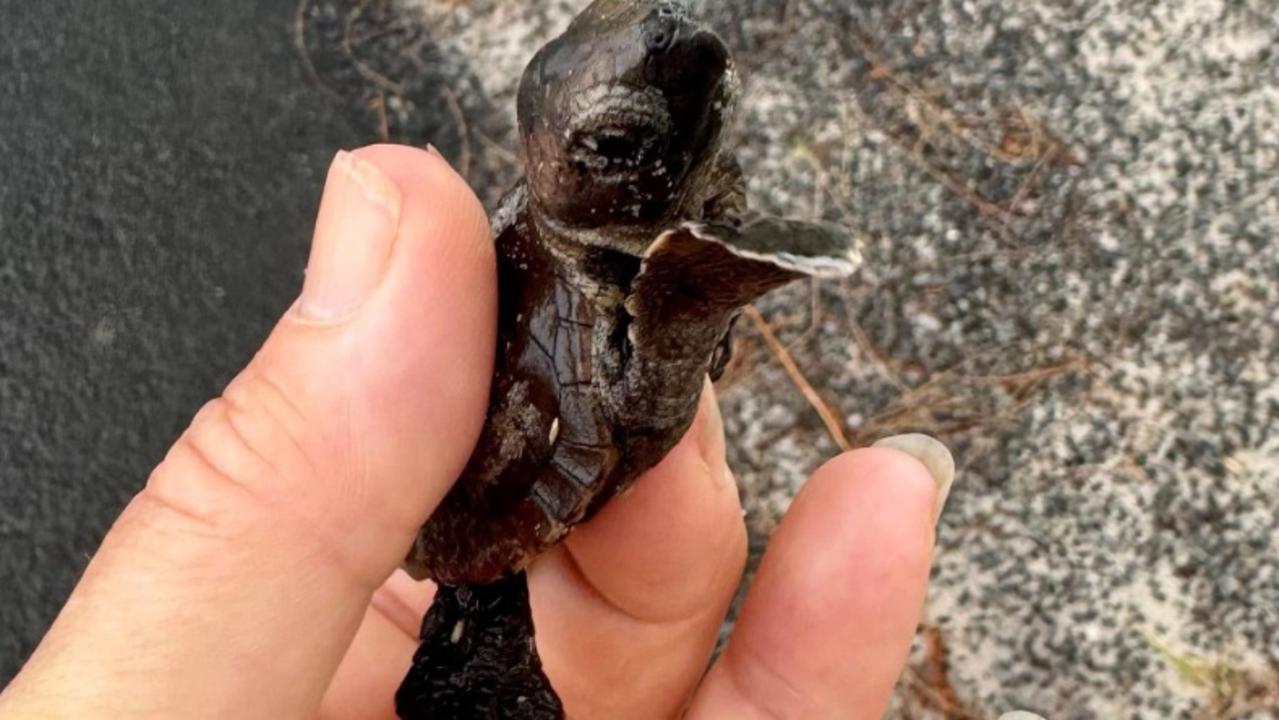Brush-turkeys return in great numbers after fears of extinction
This bird is wreaking havoc in gardens across the state and Queenslanders can’t do a thing about it.

Pets and Wildlife
Don't miss out on the headlines from Pets and Wildlife. Followed categories will be added to My News.
Nesting brush turkeys are wreaking havoc in gardens across the state and Queenslanders can’t do a thing about it.
As a protected species, residents face massive fines of up to $483,900 and two years imprisonment if they hurt or kill a brush turkey and only licensed bird relocators can capture and release them.
Ecologist Dr Ann Goth said brush turkeys – or bush turkeys – were more active at the moment because it is their egg laying season.
“Traditionally, they live in rainforests, so that’s their original habitat,” she said.

“They have moved into suburban areas, especially where there’s parks and nice gardens with lots of mounds and trees.”
During the mating season, the male brush turkey – identified by the yellow wattle hanging from its neck – builds large nesting mounds in order to attract females.
Males often have several mates during a season and a mound is capable of holding up to 150 eggs.
The male will not abandon the nest until the eggs have hatched.
University of Southern Queensland wildlife expert Dr Meg Edwards said the nesting habits of the brush turkey can be frustrating for residents who have their gardens ripped up.
“They build mounds of plant litter, soil, mulch and leaves,” she said.

“That’s what people don’t appreciate quite as much if they’re coming in and potentially making a mound in their garden..”
Dr Edwards recommended people put chicken wire over the mulch or use heavier coverings such as rocks and gravels.
“The mounds are usually made more in the shady area, and so if you trim a few branches making it a little bit brighter for them, then maybe they won’t build their mound,” she said.
“Make sure your bins are properly secured so they don’t get in there and try to eat our food scraps.”
She said the species were pretty identifiable.
“They’re pretty big birds relatively, and they’re sort of black,” she said.
“The males are the ones that get the really, really red heads and the really yellow wattles (skin hanging from their necks).
“The females tend not to have that quite as much, and sometimes to be a little grey as well.”
Dr Goth said it wasn’t that long ago that bush turkeys were facing extinction.
“They have been hunted almost to extinction in the 1950s and before that … now they’re legally protected,” she said.
Brisbane City Council has this year been called out to 84 properties over brush turkey complaints, with New Farm and Jindalee the most likely suburbs to be hit by the destructive bird.


